Hardwood vs Vinyl Flooring
Hardwood
$12 - $20
(sq. ft. installed)
VS
Vinyl
$2 - $8
(sq. ft. installed)
Cost to install hardwood or vinyl flooring varies greatly by region (and even by zip code).
To get free estimates from local contractors, please indicate yours.
Hardwood
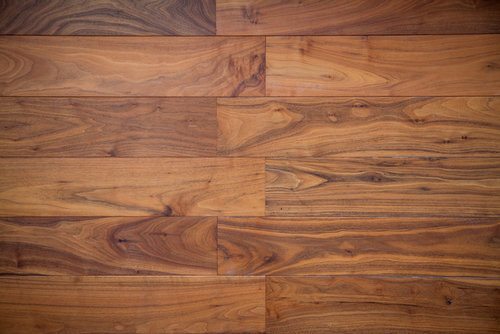
- Longer lifespan
- Higher resale value
- More attractive appearance
- Can be repaired and refinished
- Good insulator
- Renewable resource
- Expensive and difficult to install
- Susceptible to moisture damage
- High maintenance
- May be damaged by radiant heat
(sq. ft. installed)
Get free advice and estimates from flooring contractors in your city.
Vinyl

- Cheaper
- Easier to install
- Low maintenance
- Softer and more sound absorbent
- Impervious to moisture
- Can be used with radiant heat
- No impact on resale value
- Cannot be repaired
- Can emit volatile organic compounds (VOC)
- Shorter lifespan
(sq. ft. installed)
Get free advice and estimates from flooring contractors in your city.
Two flooring choices available to homeowners today are hardwood floors and vinyl 1 flooring. Hardwood flooring may be made of a solid piece of wood or it may be engineered with several layers of plywood 2 beneath a hardwood veneer 3. Oak and maple are the most common hardwoods used. Vinyl flooring is a single layer of textured and dyed material over a rubberized plastic. It is usually made from polyvinyl chloride (PVC) resin, a synthetic material from the petroleum industry.
Each flooring type has pros and cons, which are discussed below. The choice depends on the homeowner’s budget, the rooms to be floored, and personal taste.
Installation
Both hardwood and vinyl flooring can be installed by a proficient DIYer with access to the necessary tools and equipment. Vinyl flooring is easier to install. A professional installation, however, will usually offer the best results.
Hardwood flooring can be installed onto a level wooden subfloor 4 or a cement foundation. Hardwood does not forgive an uneven subfloor structure as well as vinyl because wood can bend over time. An expansion gap is necessary around the perimeter of the floor to allow the boards to swell and contract from moisture.
While a perfectly level floor is not necessary for vinyl flooring, a perfectly clean surface is. Vinyl may be installed onto wood, concrete, or on a layer of existing flooring. Vinyl planks or tiles have a peel and stick backing and are also glued to the floor surface. This can make them difficult to remove if remodeling is desired.
Costs
The greatest factor affecting the cost is the quality and type of the materials used. Vinyl flooring is less expensive to purchase and install, offering homeowners the greatest immediate value. Vinyl flooring comes in three basic types: sheet, tile, and planks. Sheet vinyl is the most cost effective material at $0.50 to $2 per square foot. Tiles and planks are similar to each other in price, ranging from $2 to $7 per square foot. Hardwood, on the other hand, ranges widely in price according to the type of wood desired. Oak or maple planks cost from $4 to $14 per square foot, pre-finished. More expensive wood varieties such as mahogany, wenge, and teak have much higher price tags, $25 per square foot and greater. Installation can be much higher also if the hardwood flooring is not pre-finished.
The average cost of vinyl floor tiles or planks is about $3 per square foot, and the average installation cost is $2.50 per square foot for a total of $5.50 per square foot. However, a pre-finished, average-quality hardwood choice with installation will cost approximately $8.25 per square foot.
The higher cost of hardwood flooring can be justified, however, by the increased resale value of a home. Installing vinyl flooring adds no long-term value to the home.
Appearance
Hardwood floors offer a more attractive appearance. Since they are made from solid woods, they show the natural tones and grains. The colors range from neutrals to reddish hues depending on the trees used. Wood adds warmth to a room in design and reality since it is also a good insulator.
Modern vinyl planks are dyed and textured on the outer layer to mimic many different hardwood species, even the most expensive varieties. Once professionally installed, only a close examination will show the difference between vinyl and hardwood.
Vinyl has a softer, more sound absorbent quality than wood due to a layer of rubberized backing. One drawback of natural wood is that it is loud.
Maintenance
Vinyl has the least complicated maintenance needs. It should be regularly swept and mopped with recommended cleansers. Vinyl floors can also be vacuumed with the brush feature disengaged. In order to avoid wear in heavy traffic areas, homeowners can use area rugs or runners. Damaged vinyl cannot be repaired only replaced.
Hardwood floors should be swept or dusted often to avoid scratches from small dirt particles. The homeowner should use products specifically designed for wood to prevent moisture from damaging the wood. About every ten years, wood floors will need to be refinished and, if necessary, repaired.
Environmental Impact
Since hardwood flooring is made from natural wood, it is a renewable resource. It has a lower environmental impact. To check a particular wood variety’s impact on the environment, look for certification from the Forest Stewardship Council.
Vinyl 1 is not as environmentally friendly since it is made largely from PVC resin. Concerns exist about emissions of volatile organic compounds (VOCs) from PVC products including vinyl flooring. Floorscore® IAQ certification (Indoor Air Quality) was developed by the Resilient Floor Covering Institute and rates these VOC emissions.
Hardwood floors can be recycled when removed, but vinyl flooring made of PVC cannot.
Durability
Hardwood floors have a longer lifespan, but they must be carefully maintained. In terms of day-to-day use, vinyl is more durable although it is susceptible to cuts and scratches. Dust, dirt particles, high heels, and pet claws can damage hardwood floors.
When damaged, hardwood can be refinished and look almost new for generations. Once the dyed layer of vinyl is scratched or worn through, it must be replaced.
The biggest difference in durability is moisture resistance. Hardwood floors are prone to moisture damage, so they should not be used in kitchens, bathrooms, or basements. However, vinyl is impervious to moisture damage, making it useful throughout the home.
Radiant Flooring 5
Vinyl floors and hardwood floors can be installed over radiant heating. However, the installation of harwood floors should be floating or made with an interlocking tongue and groove edge rather than a glue down or nail down installation. Moreover, it is not recommended to use radiant floor heating 5 under a plank wider than 3". All in all, as the constant temperature changes and builds up of condensation, the floor may be damaged quickly. To know more about the use of hardwood/bamboo flooring over radiant heating, it is recommended to consult the American Hardwood Information Center.
Remodeling Terms Cheat Sheet
Definitions in laymen's terms, cost considerations, pictures and things you need to know.See full cheat sheet.
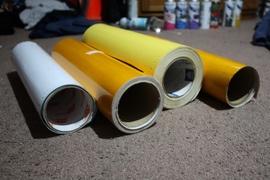 1 Vinyl: A synthetic plastic made from ethylene and chlorine. Vinyl has many applications in the construction industry and it is widely used in sidings, window frames, roofing and gutters, among others
1 Vinyl: A synthetic plastic made from ethylene and chlorine. Vinyl has many applications in the construction industry and it is widely used in sidings, window frames, roofing and gutters, among others
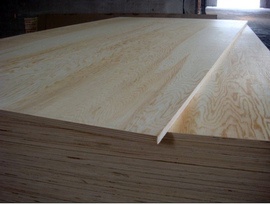 2 Plywood: An engineered construction material manufactured from thin slices of wood glued together in alternating grain patterns for strength
2 Plywood: An engineered construction material manufactured from thin slices of wood glued together in alternating grain patterns for strength
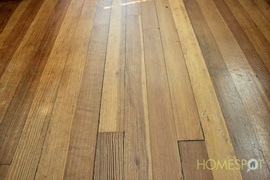 4 Subfloor: The bottom-most layer of a floor, supported by joists, over which finished flooring material is laid
4 Subfloor: The bottom-most layer of a floor, supported by joists, over which finished flooring material is laid
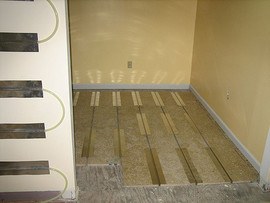 5 Radiant floor heating: (Also known as Radiant flooring) A heating system using tubes or electric wires installed underneath the flooring
5 Radiant floor heating: (Also known as Radiant flooring) A heating system using tubes or electric wires installed underneath the flooring
How much does it cost to install hardwood or vinyl flooring in my city?
Cost to install hardwood or vinyl flooring varies greatly by region (and even by zip code).
To get free estimates from local contractors, please indicate yours.